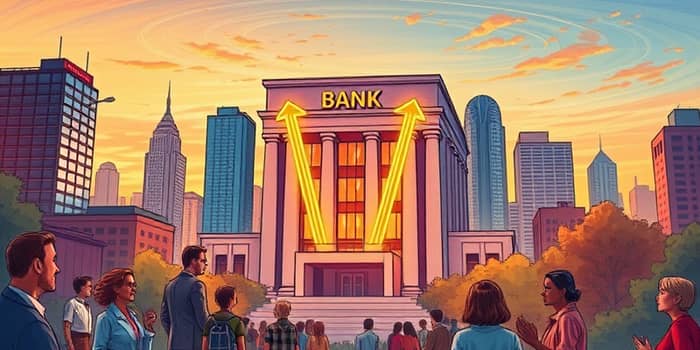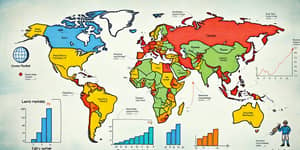
In an unexpected turn of events, the nation’s largest financial institutions have delivered results that not only stunned skeptics but also underscored their enduring role in supporting economic vitality. robust net interest income and resilient loan growth across portfolios fueled a landmark first quarter for banks, sending a clear message: even in a tight-rate environment, credit demand remains strong.
This article dives into how banks defied conservative forecasts, explores the forces behind this outperformance, and examines what lies ahead for the industry—and the communities it serves.
At the dawn of 2025, analysts anticipated a slowdown in lending, projecting a median net loan growth rate of just 2.5% for the top 20 U.S. banks. The rationale was straightforward: elevated interest rates would dampen borrowing appetite, while economic uncertainty would restrain corporate and consumer demand.
Yet by the end of Q1, aggregate earnings for the four largest banks surged by 10.8% year-over-year, propelled largely by resilient loan growth across portfolios. Average loan balances increased by 2% YoY, reaching a staggering $1.3 trillion, with Bank of America leading the charge at an expected 3.9% net loan growth for 2025—84 basis points above earlier estimates. This performance not only exceeded internal projections, but also recalibrated Wall Street’s expectations for the remainder of the year.
These elements converged to create an environment where banks could extend more credit without sacrificing prudential safeguards. Commercial loans expanded in nearly every line of business, while consumer finance—particularly auto and credit card lending—also saw renewed vigor.
Beyond headline earnings, the Q1 metrics paint a detailed portrait of strength:
Non-interest income also contributed, rising 9.6% YoY thanks to buoyant trading desks and advisory services. While Wells Fargo reported a slight decline in net interest income, peers like JPMorgan Chase and Citigroup maintained modest growth, illustrating a broad-based industry trend rather than isolated outliers.
Behind the numbers lies a quieter revolution: banks are increasingly leveraging technology to scale their lending operations without proportionally increasing overhead. shifting profit mix toward volume reveals how institutions are transitioning from pure margin expansion to growth driven by balance sheet utilization.
AI-driven credit scoring models, machine-learning algorithms for fraud detection, and digital origination platforms have collectively reduced approval times and underwriting costs. These advances not only increase efficiency but also enhance customer experience—encouraging more businesses and consumers to seek credit for expansion, refinancing, and day-to-day operations.
Federal Reserve surveys indicate banks expect credit quality to improve for most business loans, while household loan conditions may remain steady or decline slightly. Many lenders plan to maintain or ease standards throughout 2025, anticipating robust demand across commercial, industrial, real estate, auto, and credit card sectors.
This cautious optimism reflects a broader shift in sentiment—from defensive conservatism to strategic growth. Banks are positioning themselves to seize opportunities as economic momentum builds and interest rates begin to descend.
Ultimately, this narrative is not merely about profit margins or balance sheets. It is a story of institutions adapting to change, harnessing technology, and reaffirming their role as catalysts for economic progress. As banks continue to surprise on loan growth, they reinforce their ability to support businesses, empower consumers, and foster resilient communities.
In a landscape where uncertainty often dominates headlines, these results offer a beacon of confidence. The banking sector’s unexpected strength in Q1 2025 serves as a reminder that, even amid tightening cycles, innovation and adaptability can unlock new avenues for growth—ensuring that the wheels of commerce keep turning for enterprises big and small across the nation.
References













